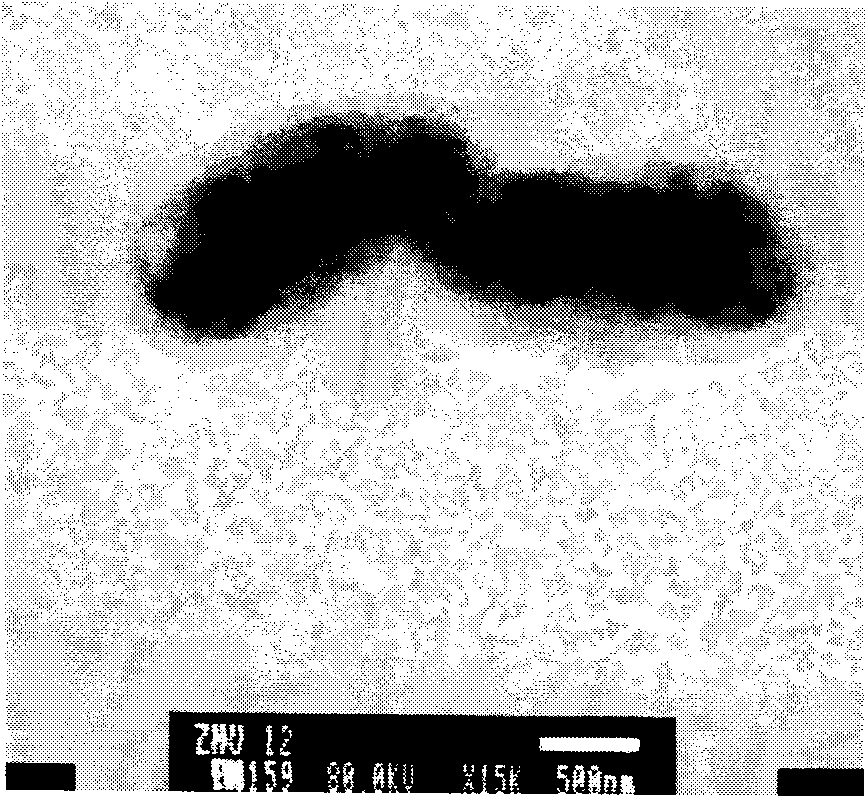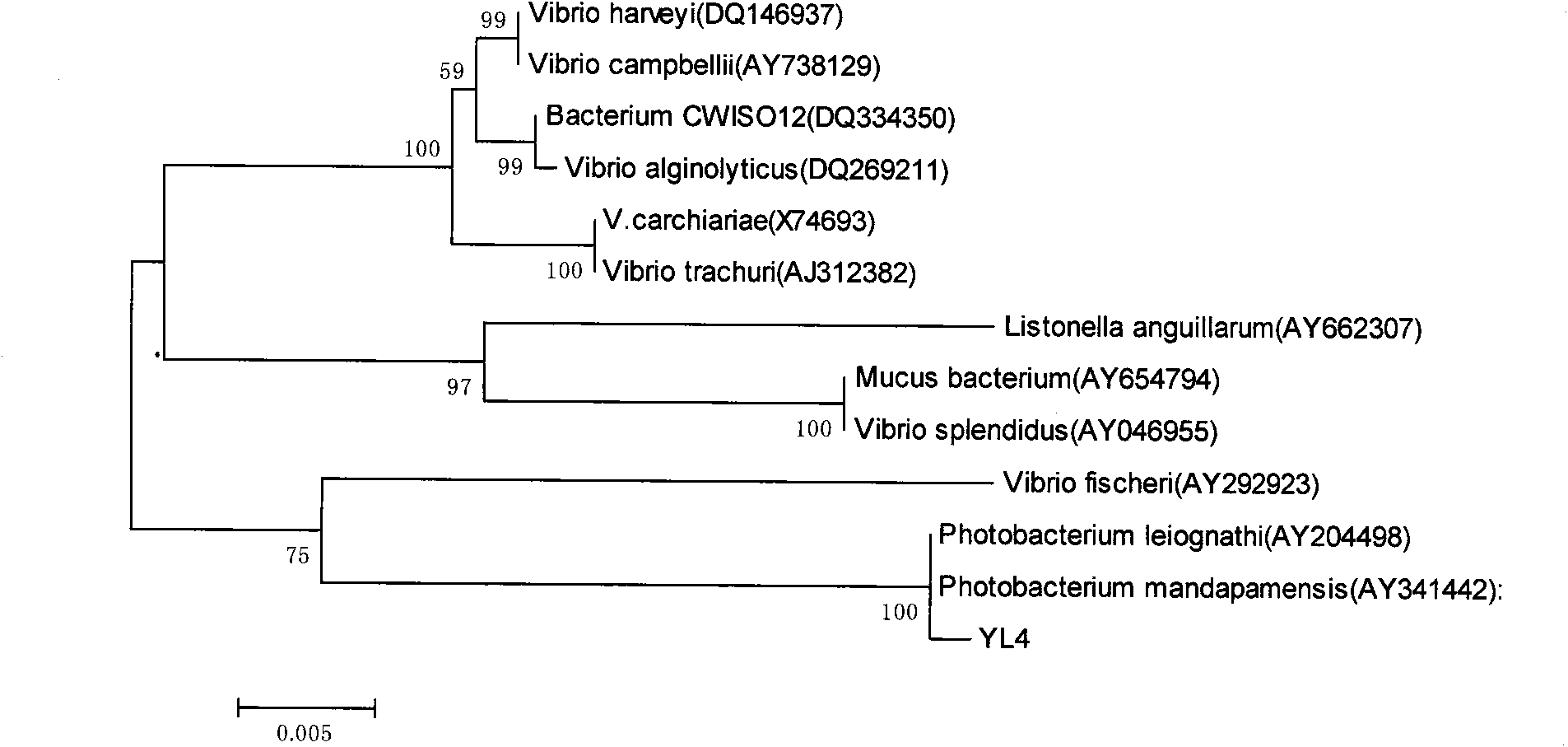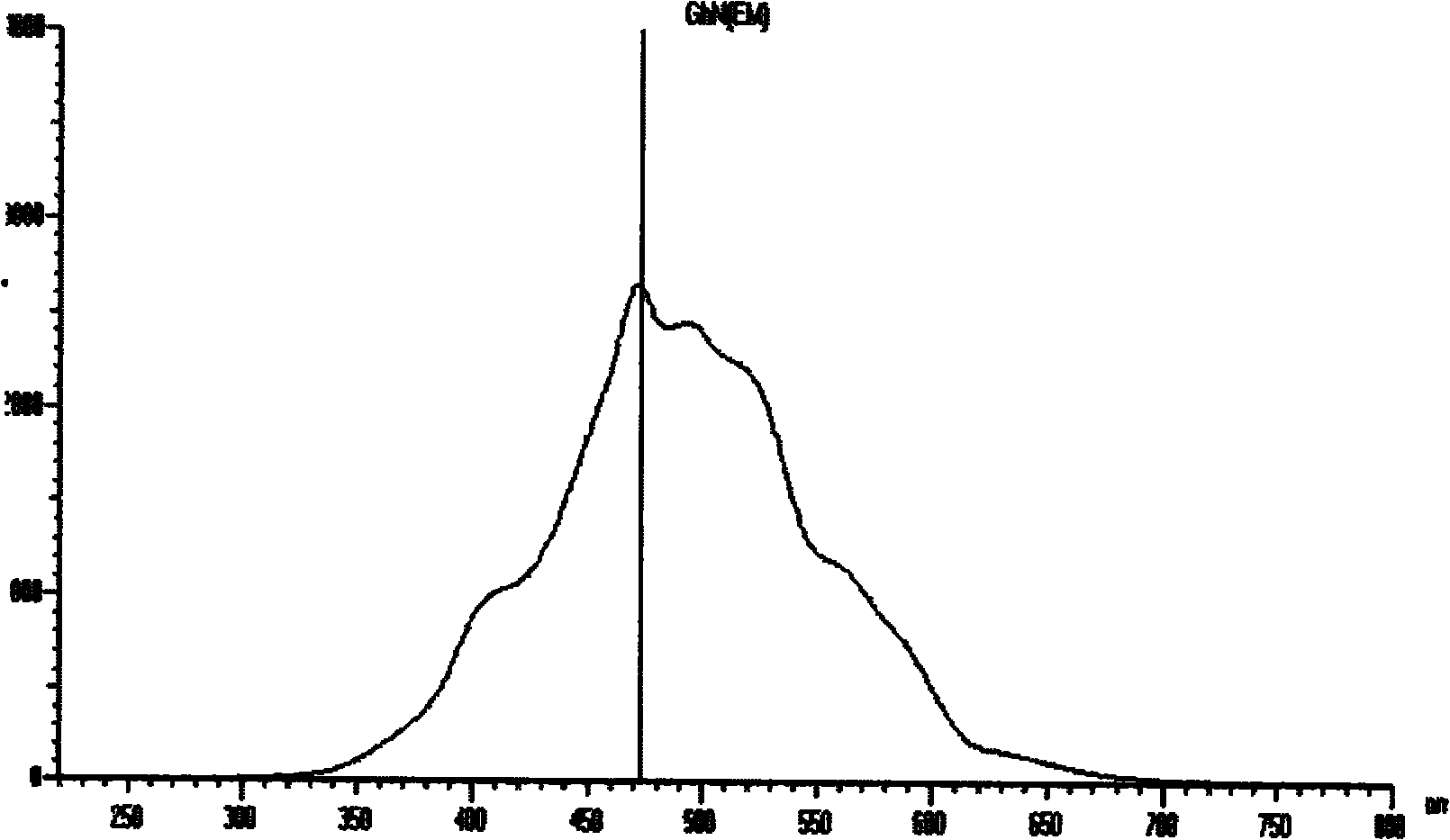Detection of environmental pollutants through photobacterium leiognathi
A technology of environmental pollutants and luminescent bacteria, applied in the field of microorganisms, can solve the problems of detection of environmental pollutants without luminescent bacteria
- Summary
- Abstract
- Description
- Claims
- Application Information
AI Technical Summary
Problems solved by technology
Method used
Image
Examples
Embodiment 1
[0015] Common seafood caught from the coastal waters of Qingdao, including squid, prawns, yellow croaker, blackhead, monkfish, etc. Divide various aquatic products into small pieces and place them on solid medium plates, culture them in a water-proof constant temperature incubator at 25°C for 10 hours, and observe the luminescence in a dark room. Luminescent colonies were marked and streaked on plates. After several times of separation and purification, the luminescent bacteria YL was obtained.
Embodiment 2
[0017] Take a single colony of luminescent bacteria YL and inoculate it in 100ml liquid medium (medium composition: peptone 5g, yeast extract 1g, FePO 4 0.1g, NaCl 20g, glycerin 3ml, distilled water 1000ml), cultured on a shaking table at 27°C for 8hrs to make the bacteria reach the terminal logarithmic growth phase.
[0018] Take 5ml of heavy metal zinc solutions of different concentrations and add them to 5ml of bacterial solution, and incubate and react on a shaking table at 27°C for 20min. After the reaction is completed, measure the luminescence value in a weak luminescence measuring instrument for 50 s, and take the average value of the results. It can be seen from the measurement results that the inhibition rate and Zn 2+ Concentration is proportional to ( Figure 4 ), so when measuring this kind of pollutant in food or environment, the content of the pollutant can be inferred according to the inhibition rate.
Embodiment 3
[0020] Take a single colony of luminescent bacteria YL and inoculate it in 100ml liquid medium (medium composition: peptone 5g, yeast extract 1g, FePO 4 0.1g, NaCl 20g, glycerin 3ml, distilled water 1000ml), cultured on a shaking table at 27°C for 8hrs to make the bacteria reach the terminal logarithmic growth phase.
[0021] Take 5ml of heavy metal copper solutions of different concentrations and add them to 5ml of bacterial solution, and incubate and react on a shaking table at 27°C for 20min. After the reaction is completed, measure the luminescence value in a weak luminescence measuring instrument for 50 s, and take the average value of the results. From the measurement results, it can be seen that the inhibition rate and Cu 2+ The concentration is proportional to ( Figure 5 ), so when measuring this kind of pollutant in food or environment, the content of the pollutant can be inferred according to the inhibition rate.
PUM
 Login to View More
Login to View More Abstract
Description
Claims
Application Information
 Login to View More
Login to View More - R&D
- Intellectual Property
- Life Sciences
- Materials
- Tech Scout
- Unparalleled Data Quality
- Higher Quality Content
- 60% Fewer Hallucinations
Browse by: Latest US Patents, China's latest patents, Technical Efficacy Thesaurus, Application Domain, Technology Topic, Popular Technical Reports.
© 2025 PatSnap. All rights reserved.Legal|Privacy policy|Modern Slavery Act Transparency Statement|Sitemap|About US| Contact US: help@patsnap.com



